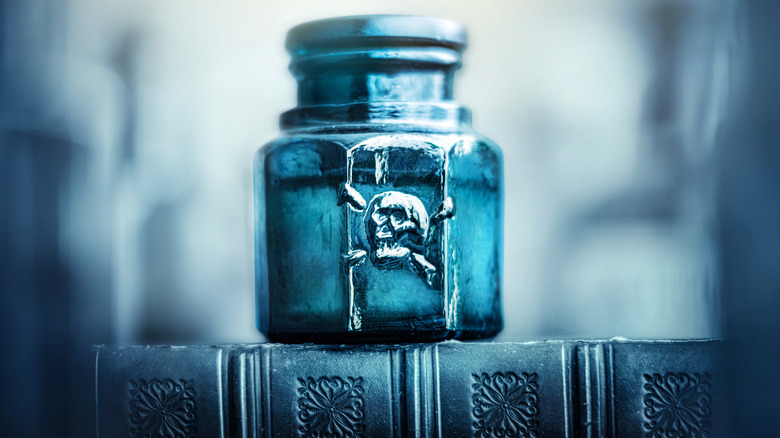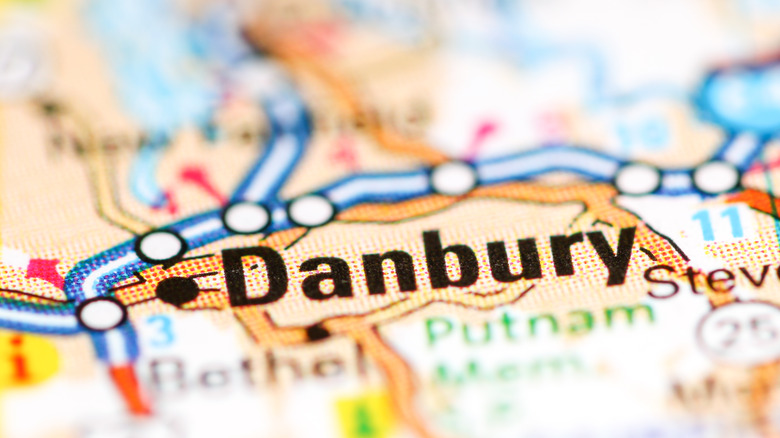The Untold Story Of The Danbury Shakes
Ever thought about where the Mad Hatter in "Alice's Adventures in Wonderland" got his name? Or why the character is so unhinged and aloof? The inspiration came from a reality most hatmakers were enduring in the 18th and 19th centuries — most infamously in the town of Danbury, Connecticut.
At one point in time, Danbury made more hats than any other U.S city (via New England Historical Society). Industrialization only spurred production even more and Danbury's factories were making 5 million hats a year by the end of the 1800s. Known for their high-quality products, this recognition came with a hefty price (per Hat Realm).
According to Connecticut History, the secret to these superior hats was a process referred to as carroting. In simple terms, the hatmakers used mercury to form hare and rabbit fur into felt (via National Geographic). Mercury, of course, is poisonous and the hatmakers worked in poor conditions, including spending their working hours in rooms with little to no ventilation.
This combination was disastrous. The hatmakers were not only exposed to mercury through this process but also from the vapors and dust that circulated though the factory. The hatmakers started to show both neurological and psychological symptoms. These included burning or peeling skin, loss of hair, teeth, mental confusion, tremors, and so much more (including eventual death).
The hatmakers of the city were so inflicted by these tremors, that they became known as the Danbury Shakes. Often mistaken for being drunk, the truth of the matter was that they were losing their minds.
Doctors were aware of the problem and did nothing
By 1860, the effects of Mercury poisoning were well documented in the medical literature (via Hat Realm). Nonetheless, according to National Geographic, hatmakers accepted this as a hazard that came with the job. The Connecticut State Board of Health's apathy further added to this sentiment. Beginning in the late 1800s, they too were made aware of the effects mercury was having in Danbury's hat factories.
However, they did absolutely nothing as it was only affecting the health of the workers and not the public (per Connecticut History). The actual men who wore the hats were protected by the hats lining. The hatmakers eventually lobbied for safer work conditions but little was done to improve the situation.
And so, it seemed that the Danbury Shakes would continue to prosper, until a Harvard doctor, Alice Hamilton, stepped in. In 1922, Dr. Hamilton conducted a major scientific study that documented mercury poisoning in the hatmakers.
This, and a later study conducted by the government, ultimately led to the ban of mercury in hatmaking in Connecticut on December 1, 1941. It was then replaced by hydrogen peroxide, a safer and less expensive alternative. Globally, the toxin is no longer used when it comes to hatmaking. Nearly 80 years after its ban, high levels of mercury can still be found in the ground and sediment of nearby rivers where the Danbury hat factories once stood.

